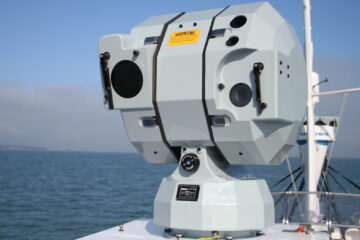The Australian designed and developed technology is tailored to the unique requirements of the Royal Australian Navy with optimised operational capability in warm shallow water. This contract expands upon the ongoing sonar upgrade of the Collins Class being rolled out to the fleet which includes a full replacement of the prime sonar arrays of the submarine.
Thales press release
Australia’s Collins-class submarines will increase their operational effectiveness in hazardous, shallow waters through the delivery of sovereign Mine and Obstacle Avoidance Sonar (MOAS) and High Frequency Intercept Array (HFIA) systems.
Thales Australia and the Commonwealth of Australia (CoA) have signed a $23.7M contract to deliver these next generation systems on the Collins-class Submarines.
The Heron MOAS is an Australian designed and developed system and the result of more than 20 years of investment in Australia by Thales, the RAN and Defence Science and Technology to develop sonar systems tailored to Navy’s unique operating requirements.
Mine and obstacle avoidance capability is critical to sustain naval operations due to the rapidly evolving threat of mines, as well as other navigational hazards in the shallow, poorly charted waters that are prevalent throughout Australia’s maritime region.
The Herron system provides enhanced detection, coupled with a low false alarm rate, against dangers ranging from small mine-like objects to reefs, shoals, and hazardous objects like displaced shipping containers.
The High Frequency Intercept Array (HFIA) will enhance the submarine’s ability to detect high frequency emissions like sonars, and emerging undersea threats.
“These advanced systems are designed, developed, integrated and sustained in Australia. Enhancing our world leading sovereign industrial capability in sonar systems. Together, these contracts will support approximately 30 jobs at our Rydalmere site in western Sydney and additional jobs with our supply chain partners”.
Thales Australia CEO Chris Jenkins
“We will be working with a great team of Australian supply chain partners and the proven capability of the Underwater Systems team in France to deliver this capability to the Royal Australian Navy”.
Thales Australia Underwater Systems Vice President, Troy Stephen






